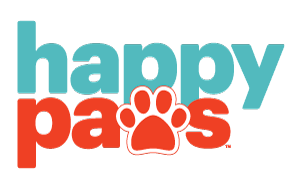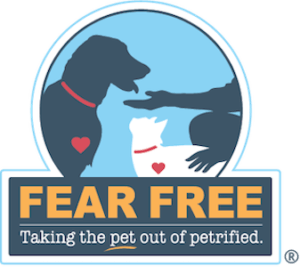Module 1: Fear Free Efforts to Prevent and Alleviate Fear, Anxiety, and Stress (68 mins)
The module below will launch in a new browser tab. After watching the lesson, close the tab, return to this page, and click on the “Take Quiz” button on this page to continue on to the quiz for this module.

In this module, we will review the key concepts considerate approach, gentle control & touch gradient, and then apply each concept to every aspect of a patient’s visit. Considerate approach, gentle control, and touch gradient will be explained and demonstrated for greeting patients, performing physical examinations and preventive care, planning for diagnostics and treatments, and moving patients through the hospital.
Lesson One: Key concepts
After completing this lesson, you will be able to:
- Define considerate approach, gentle control, and touch gradient
- Put the steps of a physical examination in order based on the principles of touch gradient
- Explain the importance of the emotional medical record, what should be recorded, and when it should be consulted
- Use the Fear Free FAS scale to evaluate fear, anxiety, and stress (FAS) in patients
Lesson Two: The visit, start to finish
At the end of this lesson, you will be able to:
- Identify the roles of the Client Service Representative (CSR), Veterinary Technician (VT) and Veterinarian during Fear Free visits
- Create a treatment plan for preventive care, including assessing patient reinforcers and distractors, and assessment of wants and needs for veterinary care
- Determine how to make a plan for who will be involved, where treatments will be performed, and what supplies you will need to complete the procedure while simultaneously providing a Fear Free environment
- Understand the process of establishing stopping points for treatments or diagnostics as dictated by the patient’s level of FAS and the relative importance of the procedure, and recognize the importance of teamwork for best results
Lesson Three: Patient movements
After completing this lesson, you will be able to:
- Make a plan for patient movements for dogs and cats, based on considerate approach and gentle control
- Understand the importance of communication between team members prior to patient movements, and how to utilize the resources in your environment to minimize social stress caused by inter-patient contact
- Recognize when to pause, reassess and make new patient movement plans when necessary

Additional Benefits
- Fear Free Educational Library
- Fear Free Toolbox: Downloadable marketing tools, drug charts and more
- Private Facebook group
- Fear Free Podcast Series
- Additional RACE approved CE courses offered complimentary or at discounted rates
- Level 2 graduation gift
Continuing Education
- Upon completion of the modules, you will receive a total of seven RACE approved CE hours


